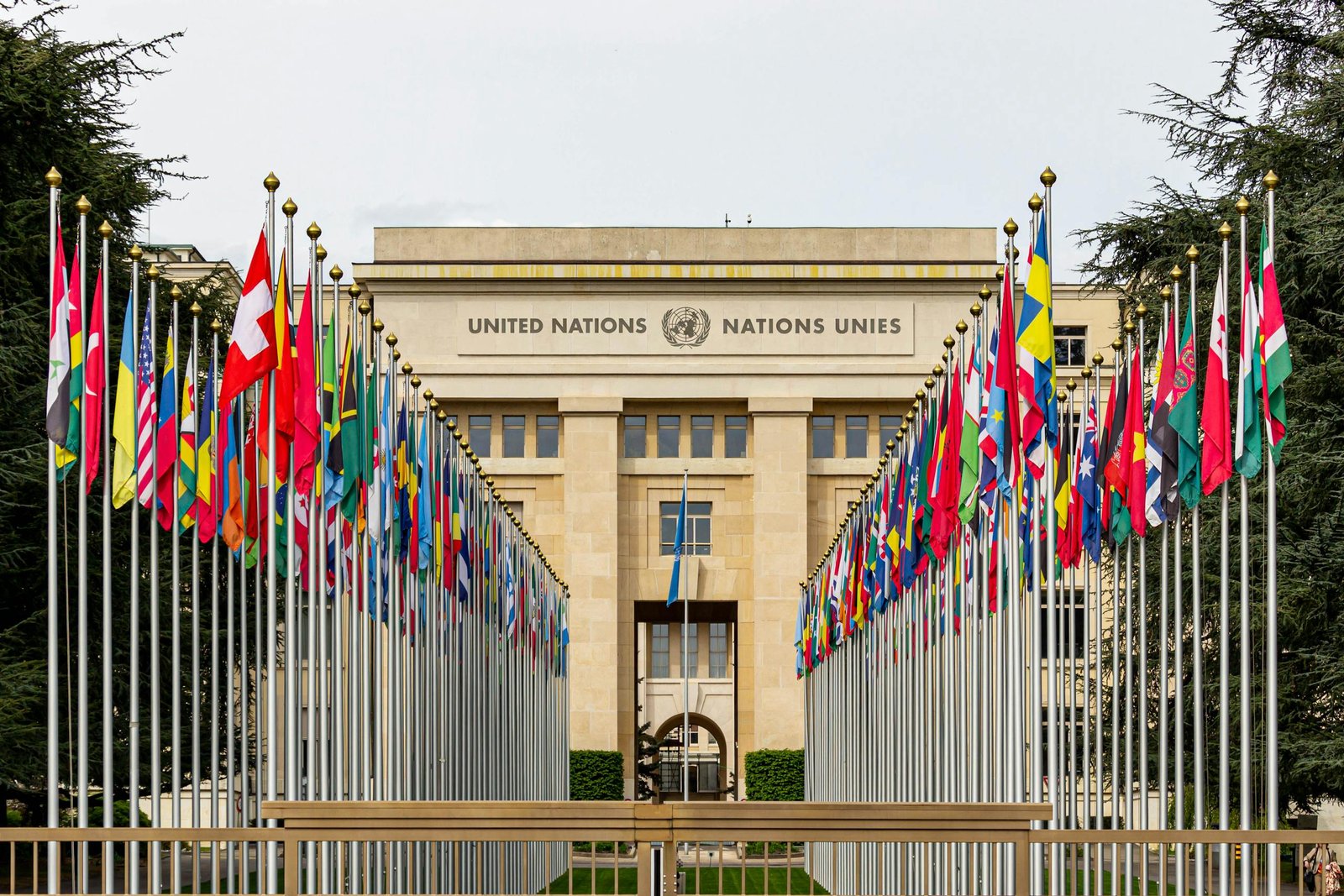Disarmament: Gender, Militarisation & Human Security
Hello friends,
Session 5 of the Disarmament Toolkit 2025 felt like the day we collectively took a deep breath, stepped back from hardware and acronyms, and asked the harder questions: who is being protected, who is paying the price, and what it actually takes to make disarmament people-centered. It was a more compact session, but it punched way above its weight.
I helped monitor and channel the Q&A again, which meant I had a front-row seat to where attention sharpened and where discomfort lived. Below are my takeaways, stitched from powerful talks by Asha Hans, Andrea Ellner, Sorcha MacLeod, and Júlia Palik.
Militarisation, patriarchy, and the cost borne by women and girls
Asha Hans brought absolute clarity: militarisation is not an abstract posture, it’s a social order. It’s fueled by patriarchal power and capitalist logics, and its impacts are gendered, predictable, and brutal.
- By 2023, we had 170 armed conflicts. An estimated 612 million women and girls were affected. An astonishing figure that’s still likely an undercount.
- In conflict zones, from Afghanistan and Mali to Ukraine, Myanmar, Sudan, Haiti, and Gaza, sexual violence spikes alongside militarisation. Terms like “obstetric violence” in Gaza reflect extreme attacks on maternal health: miscarriages up by 300%, bombed maternity wards, and deliberate denial of care.
- Conflict intensifies food insecurity, and because of entrenched gender norms, women and girls are often the last to eat and the first to absorb scarcity.
Asha’s call was not simply to condemn, but to reframe. She connected the dots long-time feminist scholars have made plain: patriarchy concentrates control; capitalism prioritises profit; both feed militarisation. You can’t fix one without confronting the others. Her prescription: move decisively toward a human security paradigm, life-sustaining environments, essential needs met, dignity respected, protection from avoidable harm. It sounds obvious until you realise how rarely policy actually aligns with those goals.
Europe’s drift: preparedness without imagination
Andrea Ellner’s intervention was hard but necessary. Since 2022, European discourse has narrowed dramatically around imminent-war scenarios: rising defense budgets, renewed conscription debates (including women in some countries), and a “whole-of-society” posture that looks suspiciously like “total defense” with the civic muscle stripped out.
- EU defense spending has climbed steeply; procurement budgets surged; Poland crossed 5% of GDP; Germany’s leadership says it aims to build the EU/NATO area’s “strongest military.”
- At the same time, space for dissenting security imaginations is shrinking. Proposals that don’t mirror “prepare for war to keep peace” get caricatured as naïve. That’s dangerous, intellectually and strategically.
Andrea wasn’t romantic about threats. She was pragmatic about response. Two points hit home for me:
- Relearn diplomacy, especially with those we least want to talk to. Talking to adversaries is not validation; it’s risk management. Without contact, threat models become caricatures, and decision-making drifts away from reality.
- Rebuild bottom-up resilience. Ukraine’s civil society has kept communities alive (education, food systems, local democratic practices) even under bombardment. That’s security too. Invest in it on purpose.
The new mercenary economy and who’s feeding it
If you think mercenarism is a niche topic, Sorcha MacLeod will change your mind in five minutes. She mapped how conflicts are increasingly internationalised via private actors and “mercenary-type” recruitment, and how poverty, criminal justice shortcuts, and state policy are now entangled in that pipeline.
- In Ukraine, recruitment has pulled from Sri Lanka, Nepal, India, Central Asia, and Syria, among others. Many recruits are poor, under- or unemployed, or in legal jeopardy in Russia and diverted into combat (“serve time or serve in Ukraine”).
- Many cases meet the international definition of mercenary, unless folded into formal military structures. Some are trafficked or signed under fraud; others seek passports or debt relief.
Why this matters:
- It exploits men and boys, destabilises families and communities, and intensifies gendered vulnerabilities at home and on the battlefield (threats against family members are used as coercion).
- Accountability is weak. Trials often end in probation or pardons; enforcement is inconsistent; evidence is abundant (contracts, medals, posts) but deterrence is thin.
- The regulatory ecosystem exists (from the UN Mercenary Convention to regional instruments and PMSCs standards), but too many states simply don’t sign, don’t implement, or actively route around it.
We can’t meaningfully shrink armed violence without addressing its labour market: poverty, precarity, lack of lawful mobility, and the political incentives to outsource risk.
Where are the women after the ceasefire?
Júlia Palik’s session was, frankly, a wake-up call for practitioners. We say DDR (disarmament, demobilisation, reintegration) is “gender-responsive,” but the global record says otherwise.
Her database examined ~370 civil war peace agreements (1975–2021). Of the 126 agreements that actually included DDR provisions:
- Only 11 referenced women at all.
- 82% made no mention of women; 9% mentioned minors; 7% lumped “women and minors” together.
- Most references framed women as victims in need of protection. Not as agents, leaders, or rights-holders entitled to equitable access to benefits, training, or decision-making.
Two big consequences:
- Disarmament clauses dominate DDR text. Because women rarely possess personal weapons (or have them recorded), gatekeeping around weapon hand-ins can effectively exclude them from registering and from benefits.
- If women aren’t explicit in the peace agreement (the “mother document”), donors and implementers have less mandate and fewer resources to include them later, however willing they might be.
Yet women are integral to armed groups. Research across 370+ armed groups shows:
- 63% included women in some capacity.
- 53% had women in frontline roles (combat and non-combat).
- 45% placed women in leadership roles.
This isn’t exceptional; it’s the norm we refuse to write down.
What good looks like (and where we fall short)
- Colombia’s 2016 peace agreement remains a benchmark for gender integration, from a dedicated gender sub-commission to named commitments embedded throughout the text. Implementation has been uneven, but the design matters.
- The 2006 Darfur Peace Agreement (even though it wasn’t implemented) shows how precise DDR language can be: refraining from recruiting under-18s; protecting women and girls in cantonment; specifying women’s representation in DDR bodies; and crucially, setting aside specific resources for women’s reintegration. That last clause almost never appears, and it should.
One case that stuck with me (and not for the reasons you’re initially going to assume): the MILF process in the Bangsamoro (Philippines). Formal numbers on women’s decommissioning are tiny, but MILF’s women-only military unit evolved into a civil society organisation post-agreement, actively brokering livelihoods, social reintegration, and voice. It’s a reminder that even when agreements fail women, women often refuse to fail one another.
What the audience kept circling back to
- Can peace agreements be amended to fix gender gaps? In practice, implementation generates annexes and subsidiary legal instruments all the time. Even without formal amendment, there are windows to correct course, if there’s will and pressure.
- Do women on DDR commissions “solve” inclusion? Representation helps, but it’s not sufficient. Power dynamics, mandates, and political backing matter. The better correlation: when women are present in peace negotiations, agreements are more likely to contain gender-responsive provisions. From text to practice still requires scrutiny and sustained support.
- Are DDR programs fueling recidivism? Failures exist, and get spotlighted. But we also under-research the silent majority who disengage successfully. We need more evidence on what works in sustaining civilian lives, especially for women who were never properly included.
What I’m doing next (and how you can help)
- Q&A follow-ups: coordinating written answers with our speakers on: amending DDR language post-agreement; designing verification and eligibility that don’t exclude women; tackling mercenary recruitment at the source (poverty, precarity); and strengthening accountability that deters, not just documents.
- Practical resource kit: compiling accessible explainers on DDR that treat women as agents; a snapshot of the global data Júlia presented; and a short guide for drafting gender-competent DDR provisions (with examples stronger than “consider the needs…”).
- Pathways for practitioners: If your organisation is designing or advising DDR, reach out. I can share templates that avoid the most common exclusion traps: weapon possession as the primary eligibility criterion, “women = minors” drafting, and vague, non-budgeted obligations.
A few convictions I’m carrying forward
- Disarmament isn’t just taking guns from hands; it’s taking violence out of systems. That demands human security as the metric, from maternity wards and school kitchens to paychecks and IDs.
- Diplomacy is not weakness. Talking to adversaries, embedding verification, and widening the negotiating table to include women and civil society are acts of strategic realism.
- Markets for force exist because markets for dignity are thin. Shrink the former by financing the latter: decent work, lawful mobility, social protection, and steady, local democratic power.
- If women are in your war, they must be in your peace, by name, with budget lines, and with responsibilities and rights that match what they carried.
Thank you to Asha, Andrea, Sorcha, and Júlia for a session that refused easy answers. And thank you to everyone who brought hard, necessary questions into the Q&A. Keep them coming! I’ll keep routing them to the right people, and I’ll keep pushing to get your questions reflected in the documents that actually shape policy.
Until Session 6,
Avi
P.S. If you’re working on DDR text, or grappling with mercenary regulation, conscription debates, or gendered protection in camps, send a note. I’m happy to share examples, can even lend a hand myself, or connect you with experts, and make sure your questions land in our post-session brief. And yes, please connect with me on LinkedIn or Instagram so we can talk and take this work further together.
Avi is a multidisciplinary researcher with expertise in science, technology and international relations. University of Cambridge alumni, Avi’s knowledge spans key areas such as AI policy, international law, and the intersections of emerging technology with global affairs. Avi is passionate about exploring new cultures and technological advancements, sharing his insights through detailed articles, reviews, and research. His content helps readers stay informed, make smarter decisions, and find inspiration for their own journeys.





